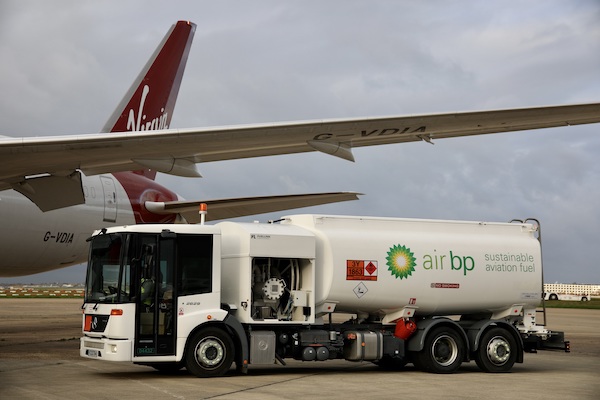The validity of sustainable aviation fuel (SAF) claims is under scrutiny as regulatory bodies address misleading environmental assertions.
Recent evaluations by the Advertising Standards Authority (ASA) highlight the challenges faced in representing SAF’s environmental impact accurately.
The Advertising Standards Authority (ASA) has recently intensified its oversight of environmental claims in the aviation sector. A notable case involved Virgin Atlantic’s promotion of a flight purportedly using “100% sustainable aviation fuel,” which the ASA ruled as potentially misleading. This highlights the stringent requirements for clarity in environmental marketing within the aviation industry.
Sustainable aviation fuel (SAF) is frequently promoted as an eco-friendly alternative to traditional kerosene. Despite its ‘green’ label, SAF still generates substantial carbon emissions during production and usage. This complex lifecycle demands clear communication to prevent consumer misconceptions.
Notably, the ASA’s review of Virgin Atlantic’s advertisement reflects the wider challenge of balancing industry terminology with public understanding.
Consumer awareness remains limited regarding what constitutes SAF. A survey conducted by Virgin Atlantic found significant misunderstandings among the public about SAF’s environmental impact.
Despite industry-wide adoption of the term ‘sustainable aviation fuel,’ its interpretation varies significantly, underscoring the importance of nuanced communication.
Through a series of rulings, the ASA has set a precedent for detailed and honest advertising in the travel sector. In addition to Virgin Atlantic, recent assessments against Hurtigruten Expeditions and Luton Airport illustrate the ASA’s commitment to factually representing environmental impacts.
These cases underscore the ASA’s demand for thorough substantiation of eco-friendly claims, ensuring adverts do not mislead consumers regarding their environmental footprint.
The aviation industry faces significant challenges as it navigates these regulatory landscapes. Companies must provide robust evidence to support environmental claims, increasing the need for transparency in marketing strategies.
As highlighted by industry experts, substantiating environmental claims requires comprehensive data, emphasising the necessity for companies to balance ambitious sustainability goals with factual representations.
Industry efforts are ongoing to standardise definitions and practices regarding SAF. Collaborative approaches are essential to align industry participants and foster a shared understanding of sustainable practices.
The push for standardisation is driven by the need to maintain consumer trust while advancing environmental goals.
The future of SAF relies on continued developments in technology and policy. Industry leaders advocate for increased investment in research to reduce SAF’s carbon footprint.
Regulatory bodies, alongside aviation companies, must work collaboratively to enhance public understanding and assurance in sustainable aviation solutions.
As the aviation industry’s sustainability claims undergo greater scrutiny, precision in communication becomes crucial.
Moving forward, the sector must strive for transparency and collaboration to build consumer trust and achieve environmental objectives.

